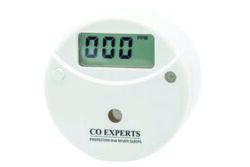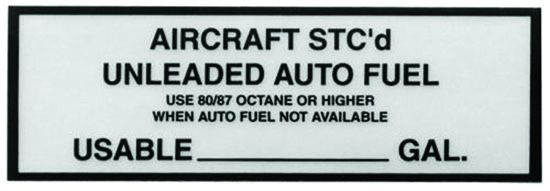Thank you for Jeb Burnside’s “Follow the Money” commentary in the April 2022 issue. I’d like to highlight another aspect of the leaded-avgas issue that aviation’s “alphabet soup” hasn’t called much attention to.
According to the EAA’s own hardcopy STC materials (but not emphasized on the EAA or AOPA web sites), “more than 65 percent of the privately owned, single-engine, piston fleet of aircraft in the United States still utilize 80 octane rated gasoline.”
That means A LOT of planes qualify for a mogas STC, which is easily available from two sources (EAA and Peterson). With STC pricing at $1.50 per horsepower, I paid $345 for my 230hp Cessna 180A. Since 100LL currently costs about $1/gal more than mogas, I’ll recoup that investment in well under a year of flying. (Not to mention eliminating the effort of removing lead deposits from the belly.)
Total savings will actually be much more than that over time, not only because of the ongoing mogas-avgas price delta (which may worsen with 100UL), but also because of the engine maintenance issues that lead exacerbates in engines that don’t need it (valve problems, plug fouling, etc.).
Embry-Riddle estimated (more than 20 years ago, per EAA hardcopy) that a Cessna 150 burning mogas instead of leaded avgas would save about $10/hr in fuel and maintenance, while for a 230 hp engine, the savings “could easily amount to more than $35.00 per hour of operation.” Those hourly savings are almost certainly much larger today.
Who qualifies? Many Pipers, 100-series Cessnas (including 150s, 180s/182s, and the most-sold GA plane in history: the 172), as well as Tigers, Luscombes, Maules, Stinsons, Taylorcrafts, Aeroncas and others. See the EAA or Peterson STC websites for a very long list of airframe/engine combinations.
It’s true that some areas of the country have better on-field mogas availability than others. The Midwest seems particularly well-endowed in this regard. However, even states with only one or two mogas-providing airports could serve a large proportion of their pilots; KLMO in Longmont, Colorado, is an excellent example of this.
No on-field mogas near you? Yes, you can Jerry-can it (make sure it’s ethanol-free!), but if your local FBO is not in the mood to install a second set of tanks and pumps, perhaps they could consider a small mogas fuel truck to serve the needs of you and your mogas friends.
What’s more, mogas and avgas are completely compatible, and can be mixed in any proportion. With the STC, you can save money flying on mogas when you can get it, but if you’re traveling somewhere else where it’s not so available, you can still fill up with 100LL. And vice versa.
Geof Swain – Via web site
Thanks, Geof. Yes, mogas often is a good option for lower-output engines. As many are fond of pointing out, there’s a 70/30 problem: 70 percent of the fleet can burn mogas, but only consumes 30 percent of the fuel. Meanwhile, the other 30 percent of the fleet consumes 70 percent of the fuel and requires 100 octane or better. Mogas will always be an option for many engines/airframes, but we need an unleaded fuel all operators can burn.
SNOWFLAKES
I enjoyed reading Jim Wolper’s article, “The Hidden Departure” (March 2022), but in the “Snowflakes” sidebar, the statement is made that “you must apply the altimeter correction in AIM Table 7-3-1, below, to each segment of an approach when the surface temperature is below the charted temperature.”
I’m confused by this whole topic but I thought you only needed to change the altitudes listed for whatever segments are listed in the CTA (Cold Temperature Airport) table. Some CTAs only change for FAF, some IAF and some MAP. The list is not convenient; the web site is listed in AIM 7-3-4. It makes more sense that all segments would be affected, but the table says only FAF and IF for Aspen are affected. So, could you clarify? And why only some segments? I had assumed this was due to local terrain.
And by the way, I think this would be a great article before next winter. Going through an approach step by step, telling us what to change, what exactly to tell ATC, etc. And for those of us with G1000 systems that give temp correction, how does that fit in? I presume that only changes the FAF? Or not?
Andrew Doorey – Via email
We agree: This is a complicated topic and deserves its own in-depth treatment in an article. Look for one in these pages later this year.
As for aircraft equipped with a G1000 or other integrated flight deck, it depends. We strongly recommend reviewing the appropriate reference materials for guidance on how to implement these corrections.
HOW MUCH CO IS TOO MUCH?
After reading your November 2021 Accident Probe article, “Pilot Incapacitation,” about carbon monoxide in the cabin, I installed a CO Experts CO meter in my PA-24-180. I’m glad I did, as the readings were over 50 ppm for extended periods. Even though the entire exhaust system was gone over three months earlier when a new engine was installed, it turns out the muffler was perforated.

After installing a new muffler and plugging a number of firewall leaks to the cabin, readings still reach 30 ppm on takeoffs and landings and average 10 ppm while in flight with cabin heat on. In a 60-year-old plane or even a new plane, what safe CO levels should I be running?
Thanks in advance.
Philip Weihe – Via email
Good question. First off, we’d want to take another close look at your Comanche’s firewall and exhaust system. Maybe run a pressure test.
We have noticed CO detector alarms when holding for takeoff and in the run-up block when the wind is gusty or on our tail. We attribute that to the wind blowing the exhaust into the cabin. It goes away when we change the airplane’s orientation or begin the takeoff. In our view, there’s no safe level of carbon monoxide in our blood.
That said, FAA Aviation Medical Examiner and friend of the magazine Dr. Brent Blue has this to say: “I recommend that any reading of 10 PPM that lasts for more than a few minutes needs to be addressed. This may be a small crack in an exhaust that may enlarge to a dangerous size. If the CO reading is rapidly rising, measures should be taken to arrest the trend by opening fresh air vents, closing heat vents, and going to lean of peak. If the level reaches 35 PPM, an emergency landing is appropriate and the use of oxygen for the pilot is prudent until the aircraft is safe on the ground. The aircraft should not be flown again until the source is identified.”
PHONETICS
On the bottom of page April’s page 10, there is a reference to “fife” and “niner.” I am familiar with niner, however, I am not familiar with fife. If you could kindly let me know what fife stands for, I would appreciate it.
Paul M. Dantas – Via web site
Just as we use “niner” to distinguish “nine” from “five,” we use “fife” to distinguish “five” from “nine.” See the AIM’s Phonetic Alphabet/Morse Code table at paragraph 4.2.7.





what’s up, highly regarded blog on oleaginous loss. alike helped.